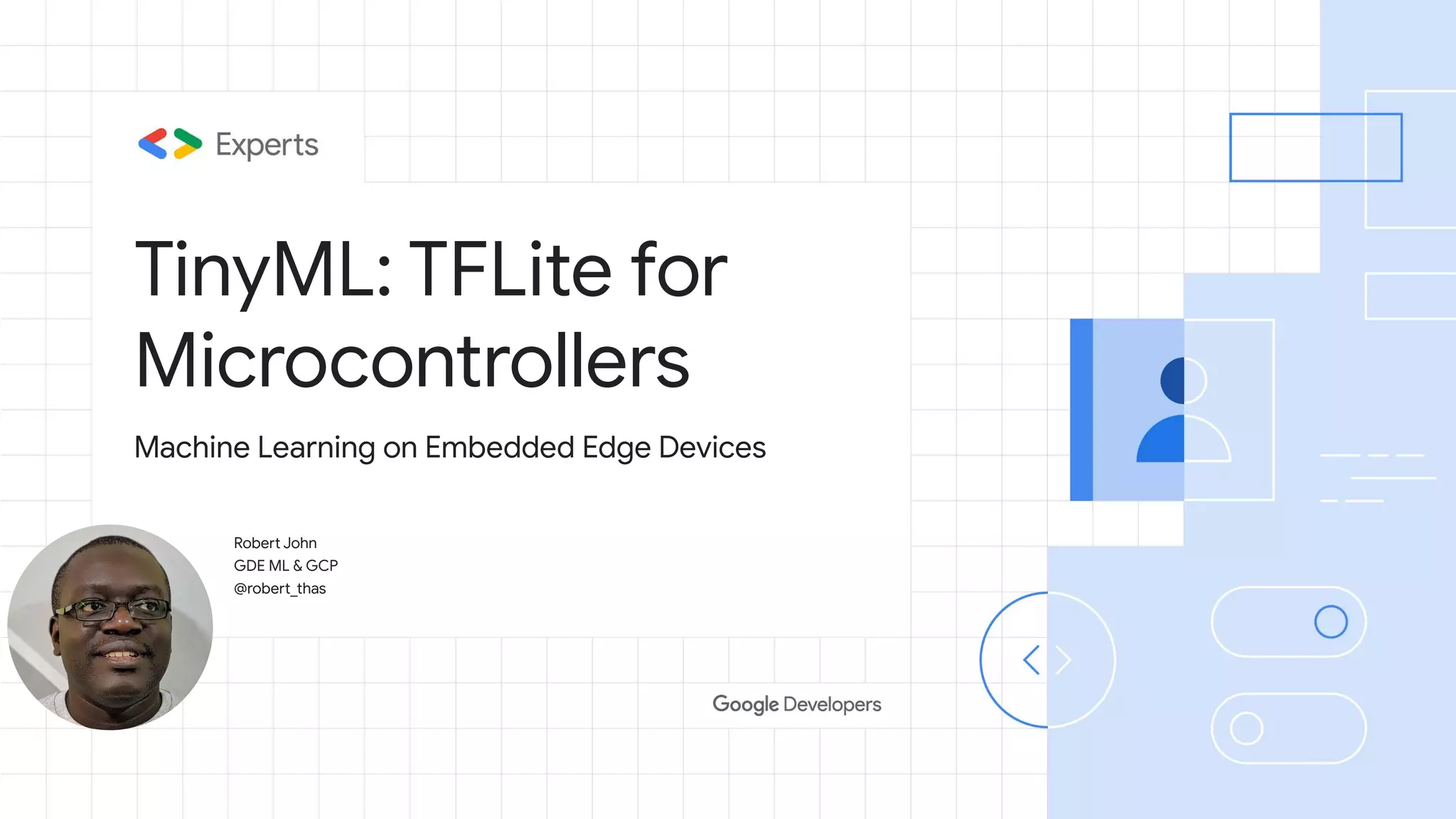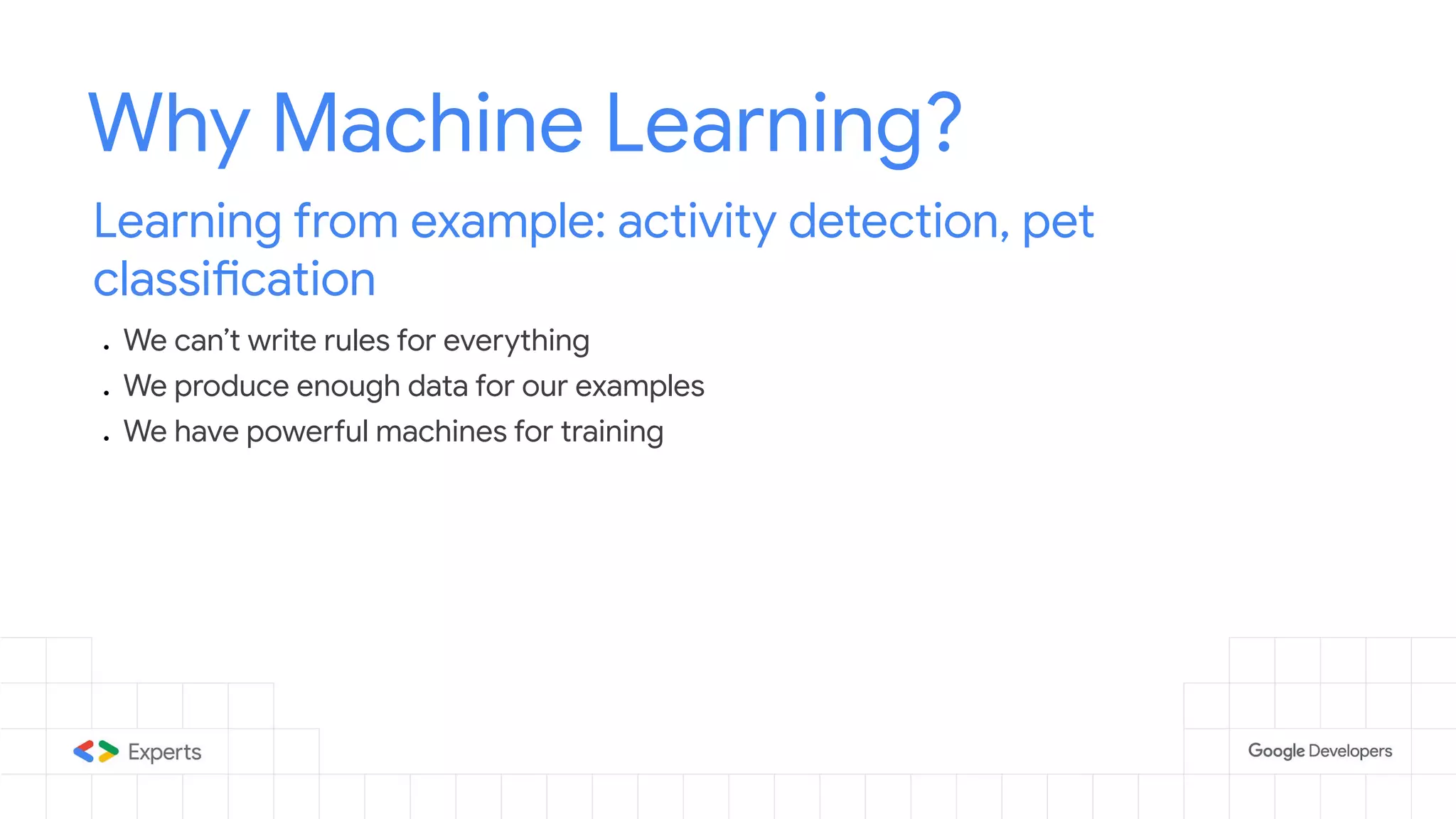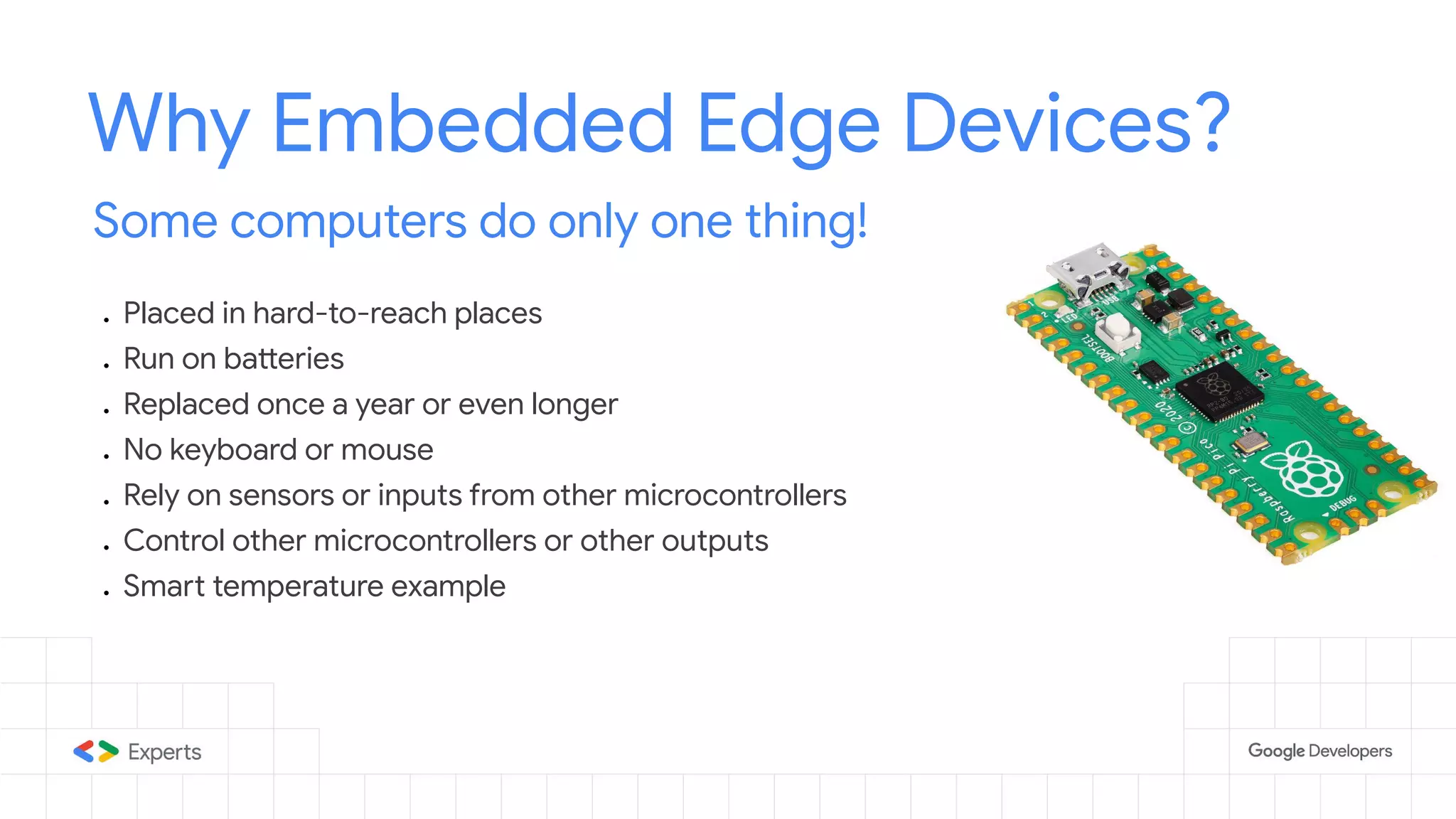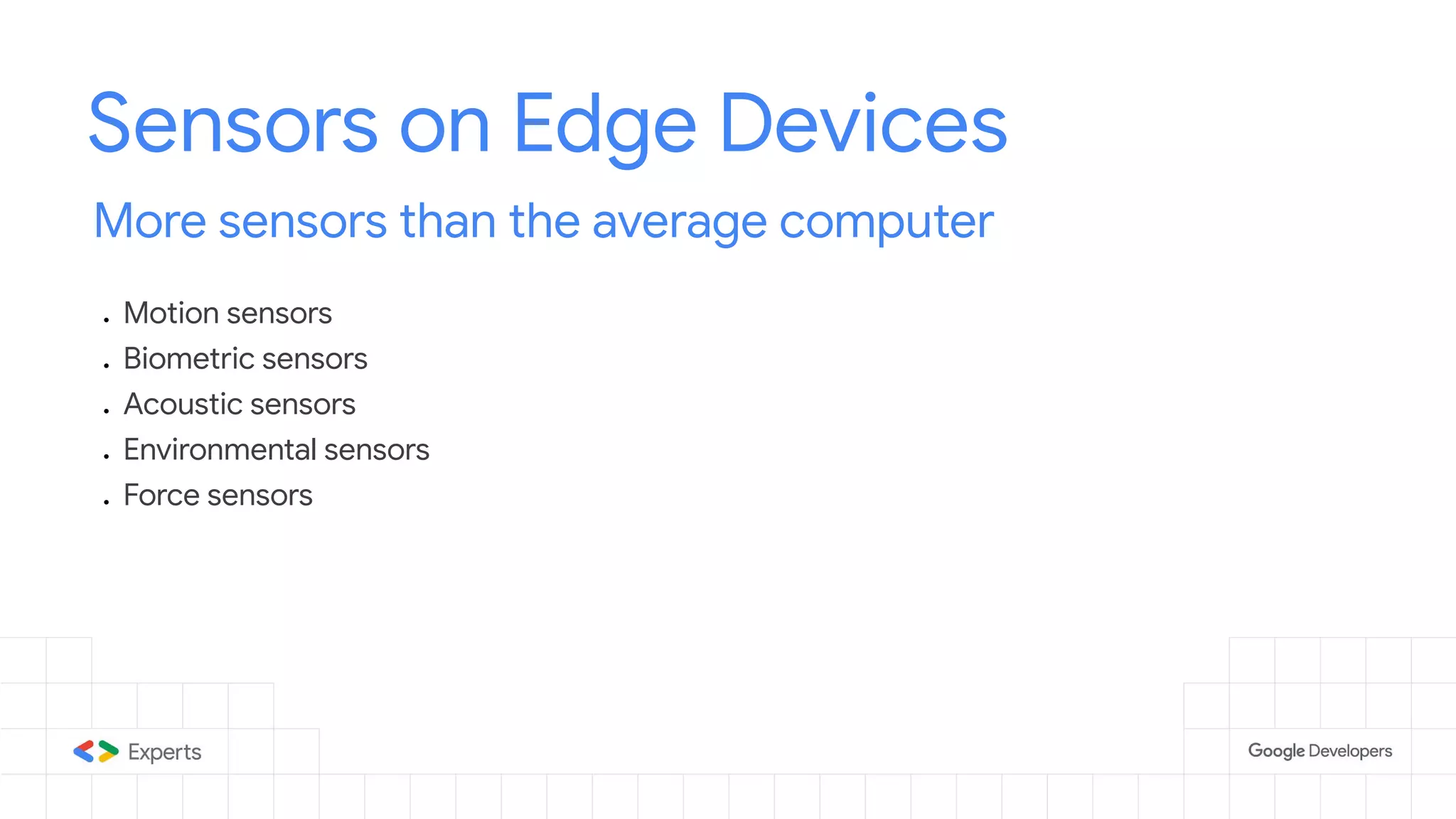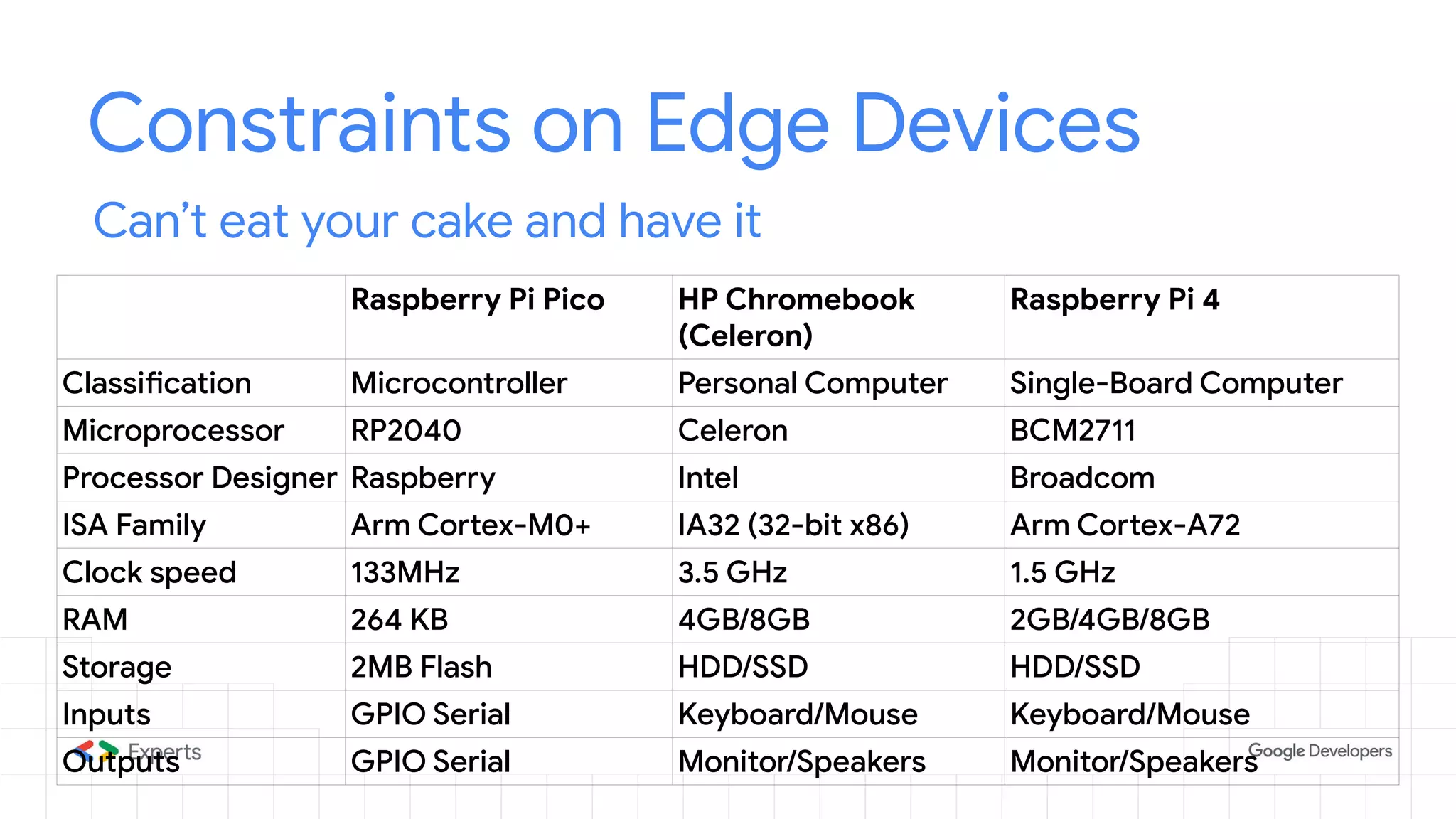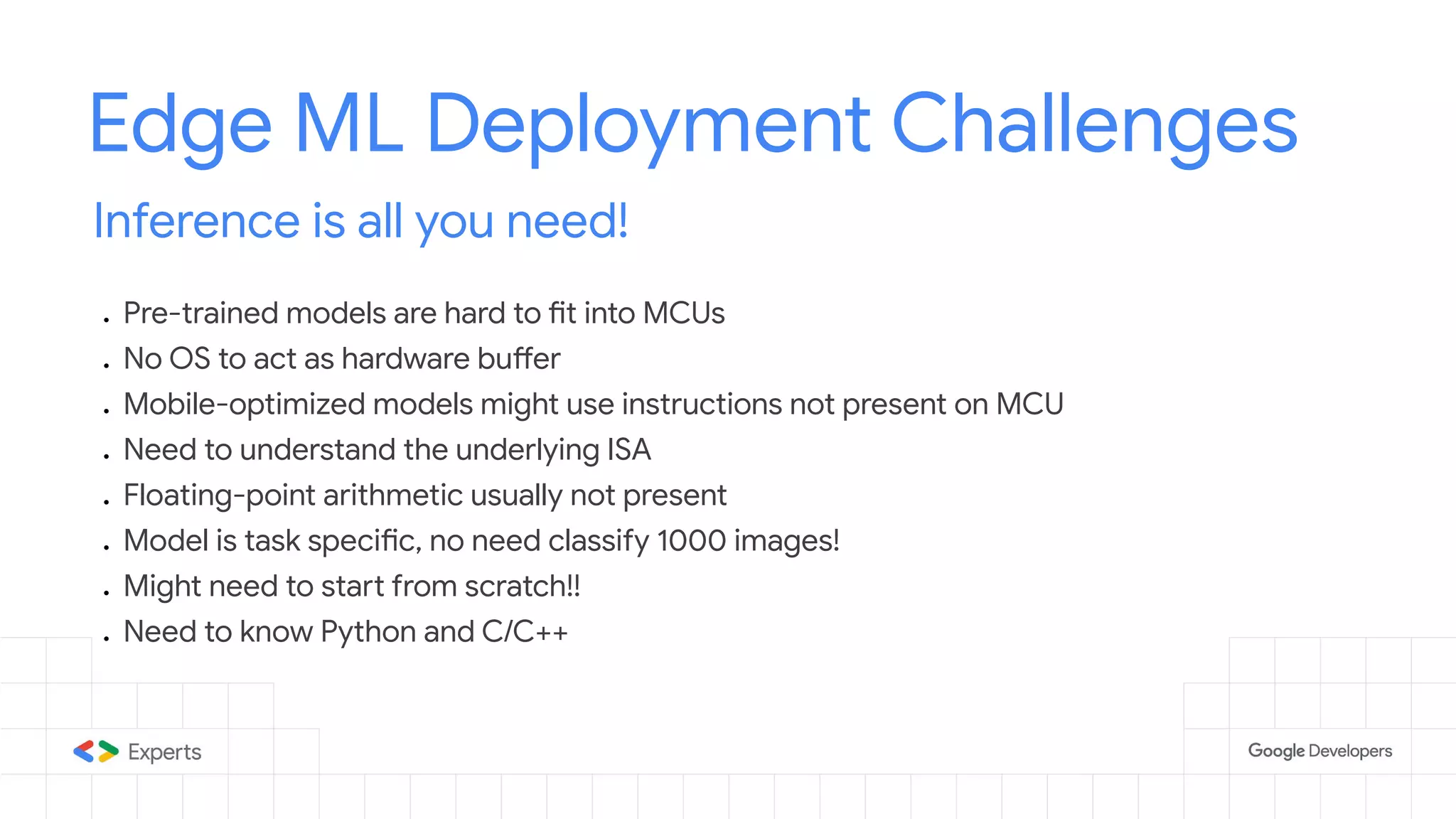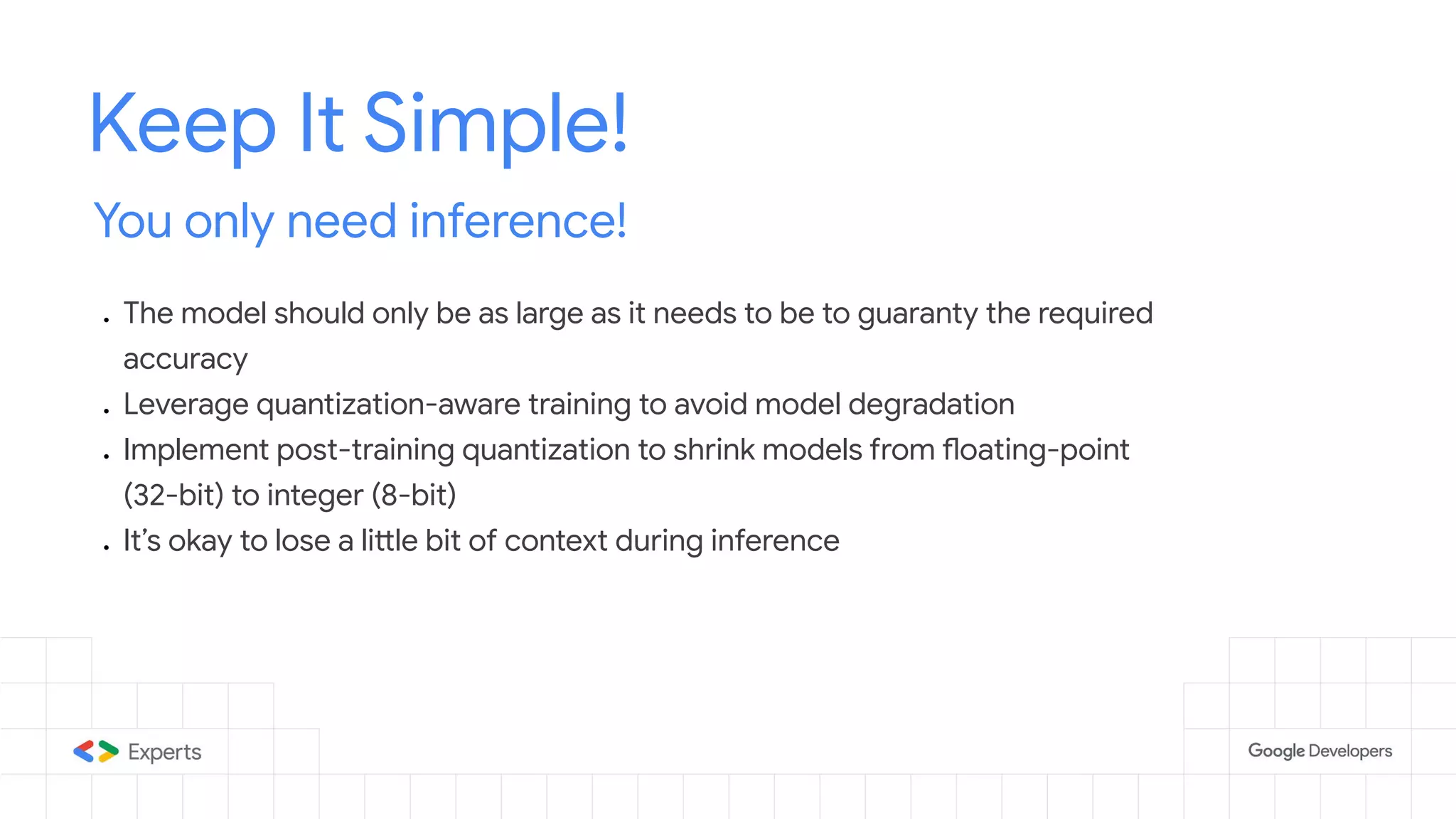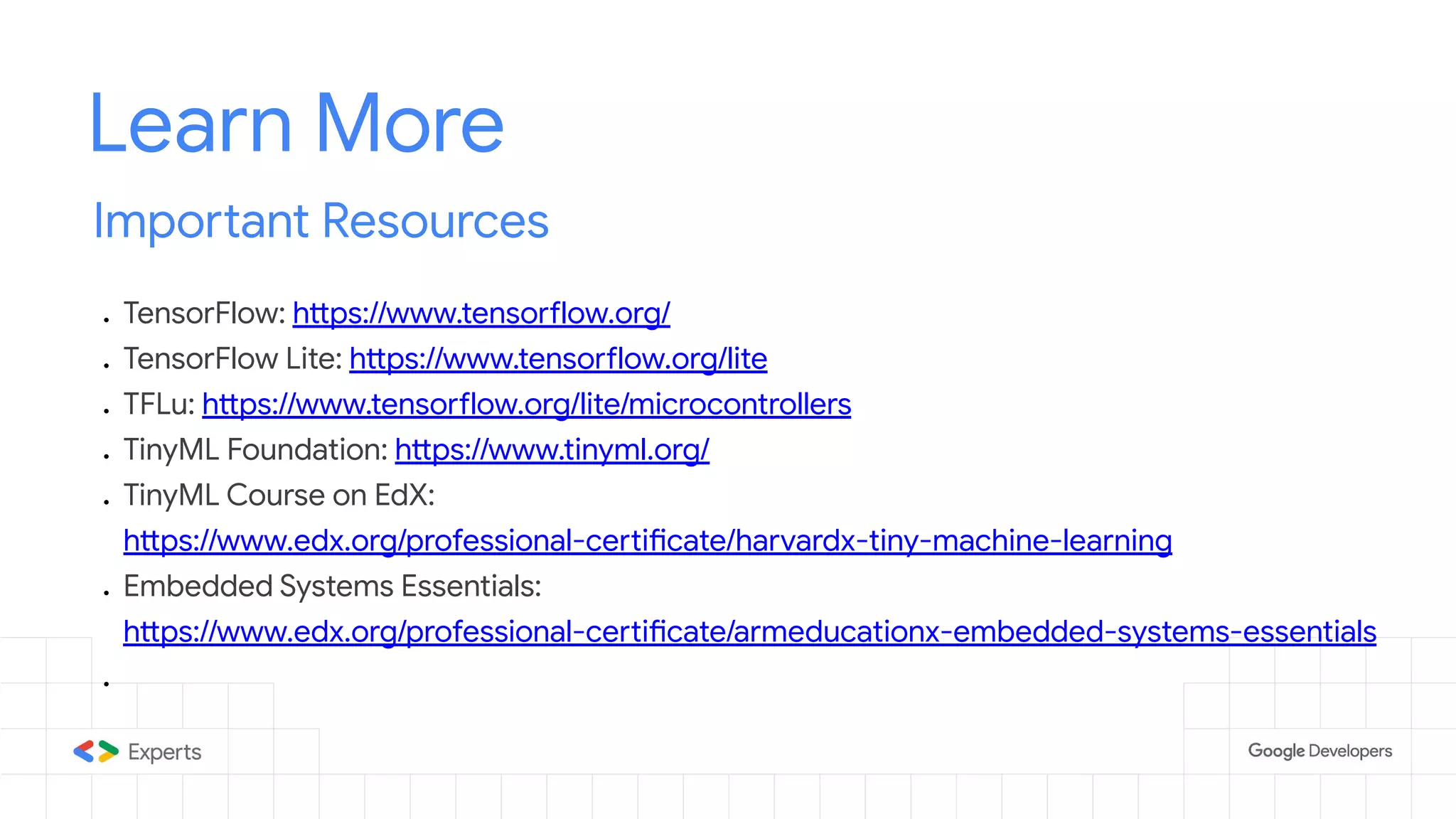This document discusses machine learning on embedded edge devices with constraints. It notes that edge devices have limited resources like small storage, no OS, and lack floating point support. This makes pre-trained models difficult to deploy as-is on microcontrollers. The document recommends keeping models simple and optimized for the specific task by using quantization during and after training to reduce model size. Resources for learning TinyML and deploying to microcontrollers are also provided.
